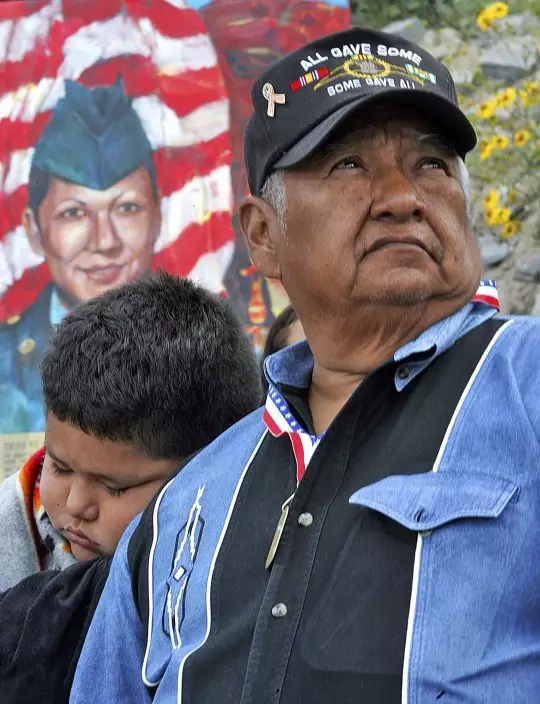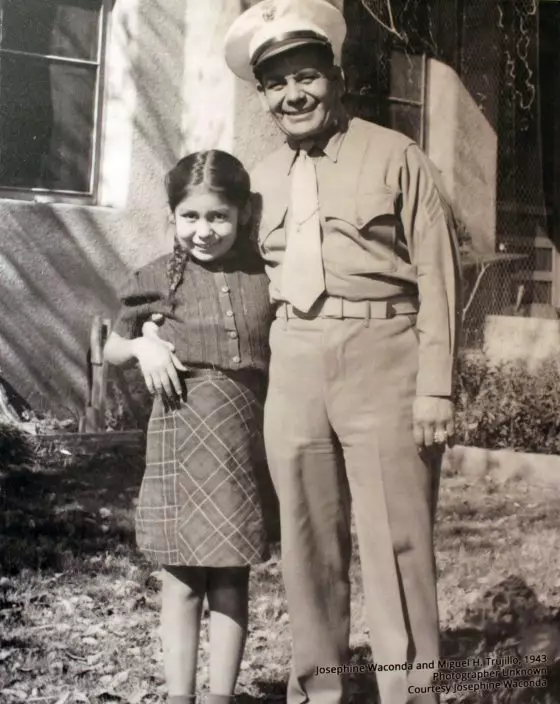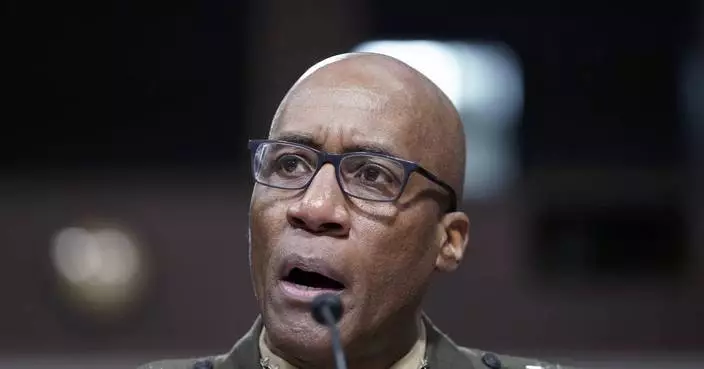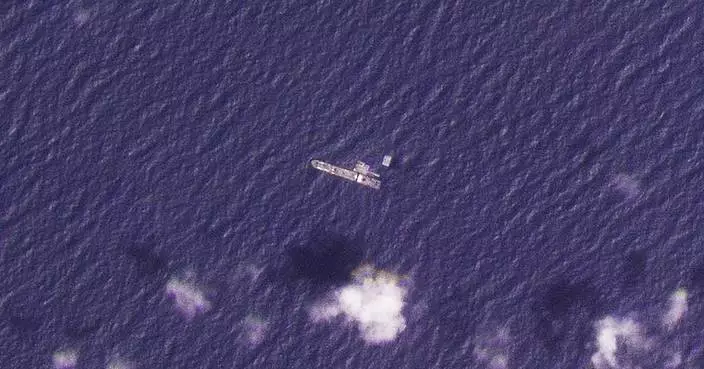Before Chuck Boers joined the U.S. Army, the Lipan Apache member was given his family's eagle feathers. The feathers had been carried by his great-great-great-grandfather on his rifle when he was an Apache scout.
They also were carried by relatives who fought in World War I, World War II, Korea and Vietnam. In 2004, Boers had the feathers with him during the Battle of Fallujah in Iraq. "I felt like I had my family with me to protect me," he said.
"The Warrior Tradition," a new film set to air on PBS, examines the complex history of Native Americans in the U.S. military since World War I and how their service transformed the lives for Native Americans from various tribes. Through interviews with veterans and using archival footage, the documentary probes the complicated relationship Native Americans had with military service and how they used it to press for civil rights.

FILE - In this March 23, 2005, file photo, a portrait of U.S. Army Spc. Lori Piestewa, is shown behind her father, Terry Piestewa, right, and her son, Brandon Piestewa, at a sunrise ceremony in Phoenix. Lori Piestewa, a member of the Hopi Tribe and a single mother of two, is believed to be the first American Indian woman killed while fighting for the U.S. military. "The Warrior Tradition," a new film set to air on most PBS stations Monday, Nov. 11, 2019, examines the history of Native Americans in the U.S. military since World War I. (AP PhotoMatt York)
The documentary exhibits the mixed feelings some Native Americans felt toward the U.S. military and how tribal members embraced those who served as "warriors."
"From just about the beginning of the United States itself, the government has fought various wars against Native nations. And that's the irony," Patty Loew, director of the Center for Native American and Indigenous Research at Northwestern University, said in the film.
But Native Americans, from tribes in Oklahoma to nations in Washington, joined the U.S. military to honor their "end of the treaty" that the U.S. government previously broke, Loew said.

FILE - In this June 15, 2012, file photo, Jerry Best, a Vietnam War veteran of the Cheyenne tribe, dances on during a Native American blessing for veteran and active-duty servicemen in Camp Pendleton, Calif. "The Warrior Tradition," a new film set to air on most PBS stations Monday, Nov. 11, 2019, examines the history of Native Americans in the U.S. military since World War I. (AP PhotoGregory Bull, File)
At the onset of World War I, the first generation of Native Americans after the so-called Indian Wars began joining the U.S. Army even though they weren't considered citizens or allowed to vote. Returning veterans, and also those from World War II, earned accolades for their service. For example, Comanche and Navajo Code Talkers in World War II were credited with passing secrets amid hostile fighting.
The returning veterans began demanding the right to vote and fought against discrimination. For example, Miguel Trujillo Sr., a Marine sergeant in World War II and a member of Isleta Pueblo in New Mexico, returned and waged a legal battle to overturn that state's law that barred American Indians living on reservations from participating in elections.
Director Larry Hott said the veterans in the film believed military service was part of their family history and wasn't just about a way to escape poverty. It's part of a legacy that goes back generations, he said.

FILE - In this June 15, 2012, file photo, Navy Hospital Corpsman Third Class Kevin Zotigh, of the Kiowa tribe, performs a ceremonial dance as part of a Native American blessing for veteran and active-duty servicemen in Camp Pendleton, Calif. "The Warrior Tradition," a new film set to air on most PBS stations Monday, Nov. 11, 2019, examines the history of Native Americans in the U.S. military since World War I. (AP PhotoGregory Bull, File)
"Many have waited a long time to talk about this," Hott said. "One veteran told me he hadn't even told his wife about his experiences."
Retired Army Sgt. Maj. Lanny Asepermy, who is Comanche and Kiowa, said after the Comanches surrendered to the U.S. in 1875, the tribe's warrior tradition was hurt. Then some Comanche joined World War I.
"We became warriors again," Asepermy said. He grew up seeing photos of relatives in the military at his grandparents' home. "I've always wanted to be a soldier. I didn't want to be anything else."

In this June 15, 2012, file photo, Blas Preciado, left, a Vietnam War veteran of the Kiowa tribe, talks with Marine Cpl. Frank Tartsah, right, also of the Kiowa tribe, during a Native American blessing for veteran and active-duty servicemen in Camp Pendleton, Calif. "The Warrior Tradition," a new film set to air on most PBS stations Monday, Nov. 11, 2019, examines the history of Native Americans in the U.S. military since World War I. (AP PhotoGregory Bull, File)
He'd fight a year in Vietnam. Before he left, his grandmother prayed over him in the Kiowa language and placed medicine on him. "A couple of times in Vietnam, I could have gotten killed. Was it luck?" Asepermy said. "I think it was because of the prayers my grandmother gave me."
The one-hour documentary co-produced by WNED-TV Buffalo Toronto and Florentine Films/Hott Productions, Inc., is scheduled to air on most PBS stations on Monday.
Russell Contreras is a member of The Associated Press' race and ethnicity team. Follow him on Twitter at: http://twitter.com/russcontreras

FILE - This March 9, 2012, file photo, shows a photograph of Miguel Trujillo of Isleta Pueblo, N.M., and his daughter on display for an exhibit at the Indian Pueblo Cultural Center in Albuquerque, N.M. Trujillo fought in 1948 for the right of American Indians to vote in New Mexico after serving in World War II. "The Warrior Tradition," a new film set to air on most PBS stations Monday, Nov. 11, 2019, examines the history of Native Americans in the U.S. military since World War I. (Indian Pueblo Cultural Center via AP, File)










